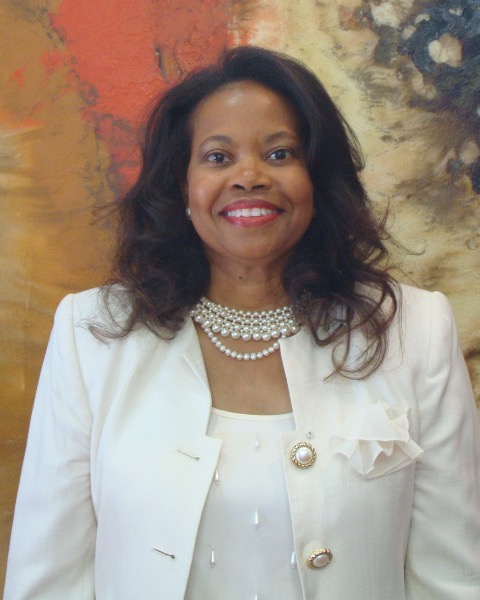SWVS 2025
MULTITRACK/CROSS SPECIES
Creating the Future of Veterinary Medicine Through Diversification of Practice Ownership
Thursday, September 25, 2025
7:00 PM - 7:50 PM CST
Location: 104
CE Hours: 1
RACE Hours: 1
RACE Hours: 1

Gerelyn Henry, BS, DVM, MBA, DACVP
CEO & President
YW August Companies
The veterinary profession and ownership of veterinary businesses is not diverse, and there are significant and disproportionate opportunities for ownership and higher wages for nonminority and women veterinary professionals. A critical shortage of underrepresented minorities serving as veterinarians exists in the United States of America. According to 2022 data from the Bureau of Labor Statistics (BLS), approximately 91.4% of veterinarians are white, 2.2% are Black, 4.3% are Asian, and 0.5% are Hispanic/Latinx. Therefore, diversity in veterinary medicine encompasses a broader scope than the issue surrounding underrepresented minorities (URM) student admission rates into veterinary school. Diversity is important throughout the profession and includes practice ownership and achieving high-paying jobs within the profession.
Diversity and inclusion issues are impactful across the lifespan of the professional veterinarian. To demonstrate that diversity and inclusion issues are important throughout the profession, we discuss veterinary hospital ownership. In 2017, approximately 93.6% of US veterinary practices and hospitals were white-owned, while the (total) category of URM owned 6.5% of firms, and African American (AfA) doctors owned 0.85% of total practices; corresponding with revenues of $33.4B, $1.9B, and $227M, respectively. These stark figures lag significantly behind the economic indicators for business ownership in the larger economy, which of themselves, do not reflect the demographic makeup of the US population. In 2015, of 5,531,169 US firms, 4,483,080 were white-owned, 996,248 were URM-owned, and 113,643 were AfA-owned, corresponding with 81.05%, 18%, and 2.05% of firm ownership, respectively. Barriers to veterinary practice ownership are numerous and include the lack of access to capital and grounding of a diverse network of support from the profession.
These alarming statistics demonstrate the basis for the urgent and immediate need to increase support to businesses owned and operated by qualified African American veterinarians. Not only does this represent a lack of URM veterinary businesses to support corresponding communities, but also indicates that mentors for bright, capable, high-potential pre-veterinary students and young URM are deficient. Without mentors, many talented youths interested in veterinary medicine are lost to the profession. Visibility of URM doctors in communities is essential to achieving our nation’s goals to build STEM career infrastructure and intellectual capacity.
Diverse veterinary hospital and clinic ownership is important for fostering a culture of inclusivity throughout the profession, because pet owners and enthusiasts need to see hospital ownership opportunities extended to veterinarians of all races and backgrounds. Moreover, it provides a credible basis for mentorship of veterinary professional students and new graduates. As we create the future of veterinary medicine, it is valuable to innovate with the goal to make the profession more diverse, inclusive and equitable. The veterinary profession should, at a minimum, reflect the larger society of the US. This affects the economic stability of veterinary practices and the larger economy related to veterinary medicine.
Diversity and inclusion issues are impactful across the lifespan of the professional veterinarian. To demonstrate that diversity and inclusion issues are important throughout the profession, we discuss veterinary hospital ownership. In 2017, approximately 93.6% of US veterinary practices and hospitals were white-owned, while the (total) category of URM owned 6.5% of firms, and African American (AfA) doctors owned 0.85% of total practices; corresponding with revenues of $33.4B, $1.9B, and $227M, respectively. These stark figures lag significantly behind the economic indicators for business ownership in the larger economy, which of themselves, do not reflect the demographic makeup of the US population. In 2015, of 5,531,169 US firms, 4,483,080 were white-owned, 996,248 were URM-owned, and 113,643 were AfA-owned, corresponding with 81.05%, 18%, and 2.05% of firm ownership, respectively. Barriers to veterinary practice ownership are numerous and include the lack of access to capital and grounding of a diverse network of support from the profession.
These alarming statistics demonstrate the basis for the urgent and immediate need to increase support to businesses owned and operated by qualified African American veterinarians. Not only does this represent a lack of URM veterinary businesses to support corresponding communities, but also indicates that mentors for bright, capable, high-potential pre-veterinary students and young URM are deficient. Without mentors, many talented youths interested in veterinary medicine are lost to the profession. Visibility of URM doctors in communities is essential to achieving our nation’s goals to build STEM career infrastructure and intellectual capacity.
Diverse veterinary hospital and clinic ownership is important for fostering a culture of inclusivity throughout the profession, because pet owners and enthusiasts need to see hospital ownership opportunities extended to veterinarians of all races and backgrounds. Moreover, it provides a credible basis for mentorship of veterinary professional students and new graduates. As we create the future of veterinary medicine, it is valuable to innovate with the goal to make the profession more diverse, inclusive and equitable. The veterinary profession should, at a minimum, reflect the larger society of the US. This affects the economic stability of veterinary practices and the larger economy related to veterinary medicine.
